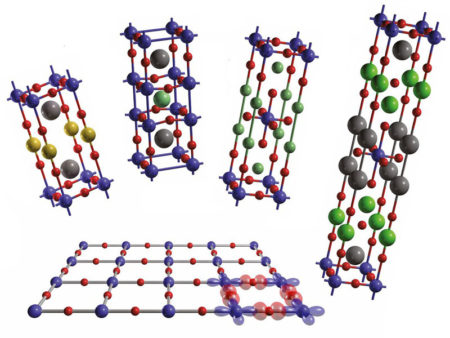Feb
19
A New View On Finding Room Temp Superconductors
February 19, 2019 | Leave a Comment
Vienna University of Technology’s new experimental results may change the way we think about making high-temperature superconductors. The results suggest a new way to the ‘holy grail of solid state physics’ – the high-temperature superconductor which works at room temperature.

Different cuprates which are being studied at Vienna University of Technology. Image Credit: Vienna University of Technology. Click image for the largest view.
Every standard cable, every wire, every electronic device has some electric resistance. There are, however, superconducting materials with the ability to conduct electrical current with a resistance of exactly zero – at least at very low temperatures. Finding a material which behaves as a superconductor at room temperature would be a scientific breakthrough of incredible conceptual and technological importance. It could lead to a wide range of new applications, from levitating trains to new imaging technologies for medicine.
The search for high-temperature superconductors is extremely difficult, because many of the quantum effects related to superconductivity are not yet well understood. Professor Neven Bariši, professor for solid state physics at TU Wien (Vienna) is performing experiments with cuprates, a class of materials which behave as a superconductor at record temperatures as high as 140K at ambient pressure. Bariši and his colleagues have now come up with a remarkable set of results and new insights that could profoundly change the way we think about these complex materials and high-temperature superconductivity in general.
Professor Bariši said, “The phenomenon of high-temperature superconductivity has been thoroughly investigated for decades, but nobody has cracked the problem yet. Quite a few materials show superconducting behavior at temperatures close to absolute zero, and we understand why this happens in some of them. But the real challenge is to understand superconductivity in cuprates, where this states persists at much higher temperatures. A material which behaves as a superconductor at room temperature would be the Holy Grail of solid state physics – and we are getting closer and closer.”
Bariši and his colleagues have shown that there are two fundamentally different kinds of charge carriers in cuprates, and suggested that superconductivity crucially depends on the subtle interplay between them.
Some of the electrical charge is localized – each of these charge carriers sits at a particular set of atoms and can only move away if the material is heated. Other charge carriers can move, jumping from one atom to another. It is the mobile charge that ultimately becomes superconductive, but superconductivity can only be explained by taking the immobile charge carriers into account too.
Bariši explained, “There is interaction between the mobile and the immobile charge carriers, which governs the properties of the system. Apparently, the immobile charges act as the glue, binding pairs of mobile charge carriers together, creating so-called Cooper pairs, which are the basic idea behind classical superconductors. Once paired the charge carriers can become superconducting and the material can transport the current with zero resistance.”
This means that in order to obtain superconductivity, there has to be a subtle balance of mobile and immobile charge carriers. If there are too few localized charge carriers, then there is not enough “glue” to pair the mobile charge carriers. If, on the other hand, there are too few mobile charge carriers, then there is nothing for the “glue” to pair. In either case, superconductivity is weakened or stops altogether. At optimal middle ground superconductivity persists at remarkably high temperatures. It was challenging to understand that the balance between mobile and immobile charges is changed, as a function of temperature or doping, in a gradual manner.
“We have performed many different experiments with cuprates, collecting large amounts of data. And finally, we can now propose a comprehensive phenomenological picture for superconductivity in cuprates,” said Neven Bariši. He has recently published his findings in several journals – most recently in Science Advances – that demonstrate that superconductivity also appears in a gradual manner. This is an important step towards the goal of understanding cuprates and providing a way to search for new, even better superconductors.
Perhaps this research will be the key opening the door to the insights needed to get superconductive materials into the mainstream of temperatures and then markets. Saving all that lost power to resistance will be like quite a few new power plants.
Its a good looking start, now for the ingenuity.

